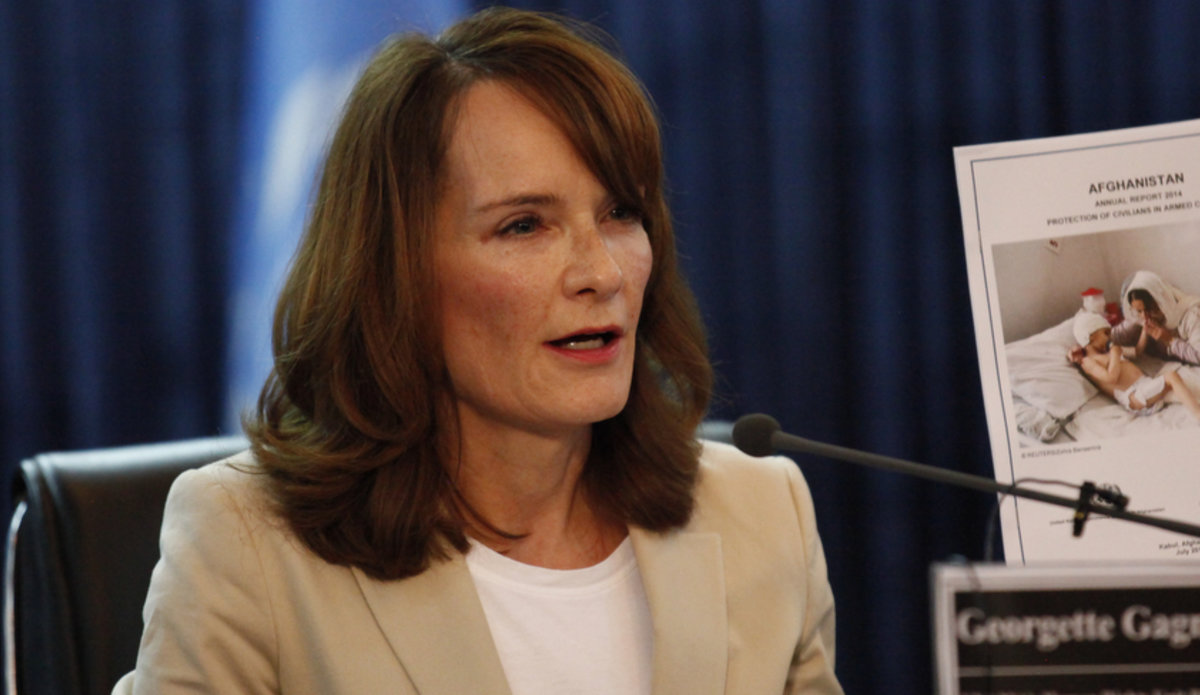Shifting tactics drive record high Afghan civilian death toll in first half of 2011
14 July 2011 - Landmine-like explosive devices drove the 15 percent increase in civilian casualties in Afghanistan in the first half of this year,United Nations Assistance Mission in Afghanistan (UNAMA) announced in Kabul today.
“June saw an all-time high in the number of security incidents recorded in a single month and the highest number ever of IED attacks recorded in a one-month period,” said Georgette Gagnon, UNAMA’s human rights director.
UNAMA documented 1,462 civilian deaths since the beginning of the year, 80 per cent of which were attributed to anti-government elements, marking a 28 percent increase on the same period last year.
A further 14 percent of civilian deaths were attributed to pro-government forces, down nine percent from the same time-span in 2010. Six percent of civilian deaths were not attributed to any party
to the conflict.
UNAMA focused on the deadly impact on civilians of pressure-plate improvised explosive devices (IEDS), an illegal means of warfare which has driven up the number of civilians being killed by insurgents.
“An Afghan child stepping on a pressure plate IED will trigger an explosion,” said Georgette Gagnon. “These devices are effectively massive anti-personnel mines.”
Staffan de Mistura, the UN Secretary-General’s Special Representative to Afghanistan called on Taliban leader Mullah Omar to make good on a 1998 edict in which he banned the use of landmines in Afghanistan.
“This report is particularly important because it’s taking place in the middle of the most intense period of the surge and what the Taliban are calling their spring and summer fighting campaign,” said Staffan de Mistura, the Secretary-General’s Special Representative to Afghanistan. “This summer is not over yet.”
De Mistura appealed to the Taliban to respect a month-long Ramadan truce during which “IEDs, pressure plates, will not be placed. Let’s send a signal in the right direction.”
He also revealed that, in preparing the report, UNAMA was in contact with Taliban elements who have disputed its findings in recent years and accused the UN of not being impartial.
“If they claim that they didn’t do what was reported, they should then indicate who did it and on what basis they believe someone else did it,” de Mistura said.
Another reason for the rise in civilian deaths was attributed to the Taliban intensifying spectacular attacks in an effort to disrupt the process of security transition from international to Afghan forces,
due to officially start next week.
More than half of civilian deaths attributed to pro-government were from Apache ground attack helicopters operated by international forces. Seventy-nine Afghan civilians were killed by airborne fire
during the six month period, marking a 14 per cent increase.Correspondingly, there was a small dip in the 30 civilian deaths inflicted during night raids.
“For an international force with a mandate to protect civilians, even one civilian dead is too many,” de Mistura concluded.
Georgette Gagnon highlighted the dilemma many Afghan civilians find themselves in during a period of intensified conflict when she quoted from an Afghan civilian interviewed in preparation for the report:
“The Taliban come to any house they please, by force. Then they fire from the house and then the ISAF and Afghan National Army fire at the house. But if I tell the Taliban not to enter, the Taliban will kill me. So what is the answer? Either ISAF kills me or the Taliban kill me. The people cannot live like this.”
 UN
UN







